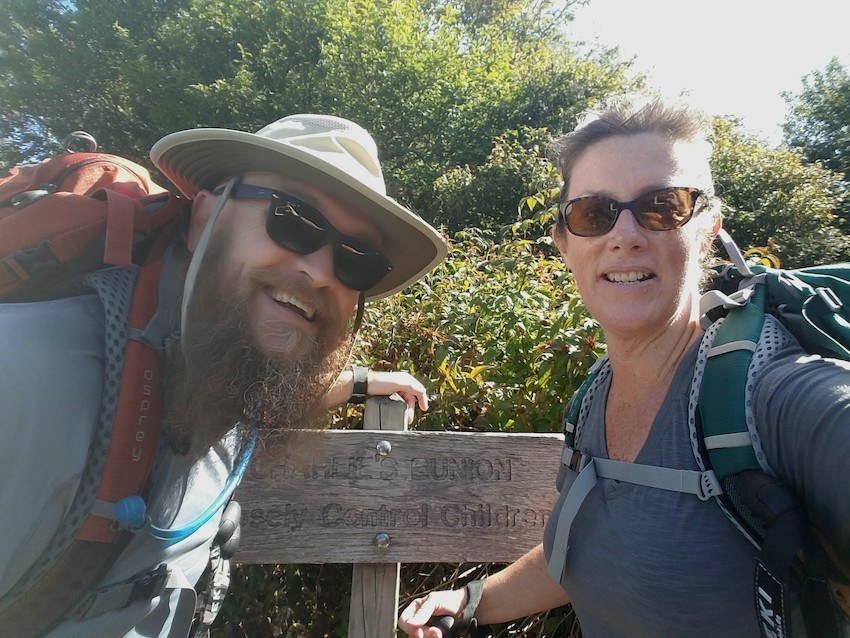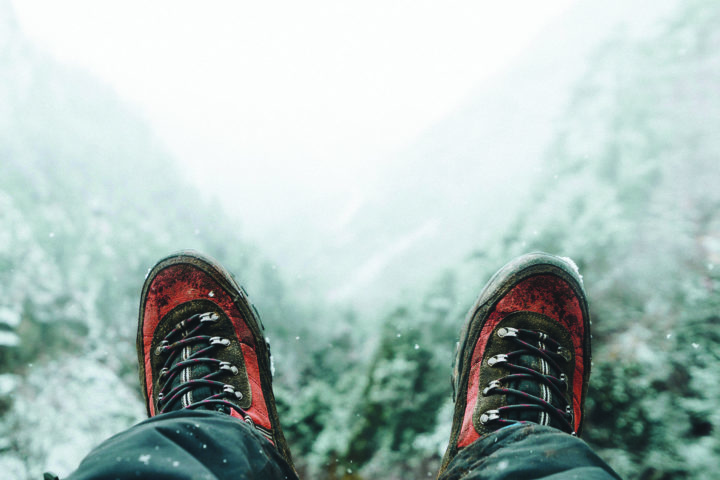Day Hiking
On the Hike

For health
Sip small amounts of water frequently. Drink more than you think you need.
Listen to your body. If your feet hurt, stop and take off your shoes. Let your feet dry and massage them. Apply moleskin or duct tape before “hot spots” become blisters.
Know the signs of hypothermia and heat exhaustion. These are two of the most common causes of trouble in the woods, and are preventable and treatable. Stopping frequently to remove or add clothing layers to stay comfortable, keeping an eye on your hiking partners, and knowing the early warning signs can make a big difference.
Know how to recognize poison ivy. The A.T. is generally so well-maintained by volunteers, you almost never will have to walk through poison ivy. But if you’re not paying attention, you could step into it along the edge of the trail. “Leaves of three, let them be.”
Keep an eye out for ticks. Check yourself for ticks frequently, and avoid sitting directly on the ground or logs.

Etiquette
Greet hikers you encounter. The A.T. is known as a friendly place; help keep the tradition!
Yield to uphill hikers. When you see someone coming, look for a rock or bare ground off the side of the trail so you don’t damage moss or crush plants when you step aside.
Avoid cutting switchbacks. You might be eager to get back to your car and and kids might want to have a race down the mountain, but taking a shortcut on those hairpin turns in the trail leads to erosion.
Keep your dog on a leash, and pick up after your pup. Find more tips here.
Be prepared for bathroom breaks. Make sure you have a toilet kit with a toilet paper, a zip-lock bag, hand sanitzer, and a trowel to dig a hole if you have to poop. When you have to go, make sure you are 200 feet from water. Make sure you carry out all paper, wipes, and feminine products. Find more info on how to dispose of waste properly here.
Carry out your trash (you might want to bring an extra zip-lock or plastic grocery bag). You can be a “trail angel” by picking up any trash you see along the way or at the trailhead parking lot.


For Fun
Listen for bird sounds. You are likely to hear different birds than you hear at home. Some of the more common and distinctive sounds you might hear are the wood thrush, pileated woodpecker, and the Eastern Towhee, who calls you to “drink your tea.” The Appalachian Trail is a flyway for all kinds of birds, and many follow the Appalachian Mountain chain when they migrate as far away as South America.
Ask a long-distance hiker their “trail name.” Long-distance hikers on the A.T. often are given amusing, descriptive, or mysterious “trail names” – sometimes with a fun or fascinating story behind it.
Take pictures. Beautiful vistas, flowers, leaves, animals, and the people you meet are all memorable parts of the Appalachian Trail experience. If you can get a white paint blaze in the photo, then it will identify the trail as the A.T.! If you encounter an unfamiliar plant or tree, leave what you find, and take a photo so you can identify it when you get back home.
Tip: Taking photos of trail signs along the way can help you recall where you were when you look back at your photos later.
Discover More

Hiking Tips
What to Know Before You Go
Wide-open views, crisp air and solitude make for a cool hike, but when winter hiking, being prepared is key.

Where to Hike
Our Favorites for a Winter Adventure
These hikes are not only enjoyable, but also safe for a colder day

Roan Highlands Haven
Appalachian Balds are for the Birds
The iconic bald mountains along the Appalachian Trail in North Carolina and Tennessee are significant to the future of migratory and resident birds.
